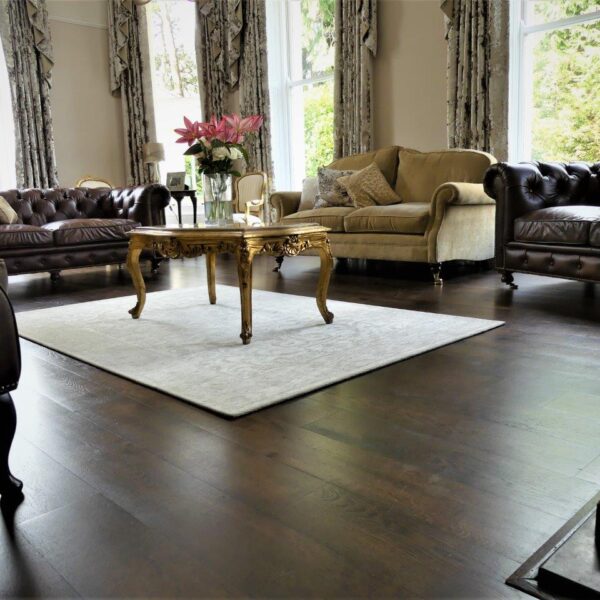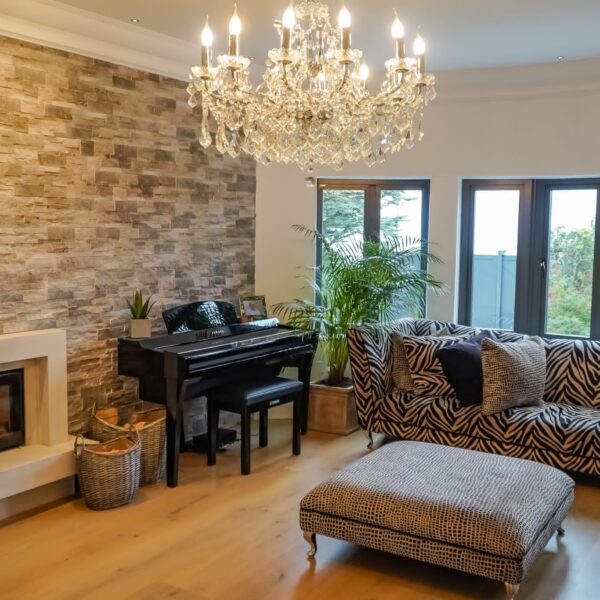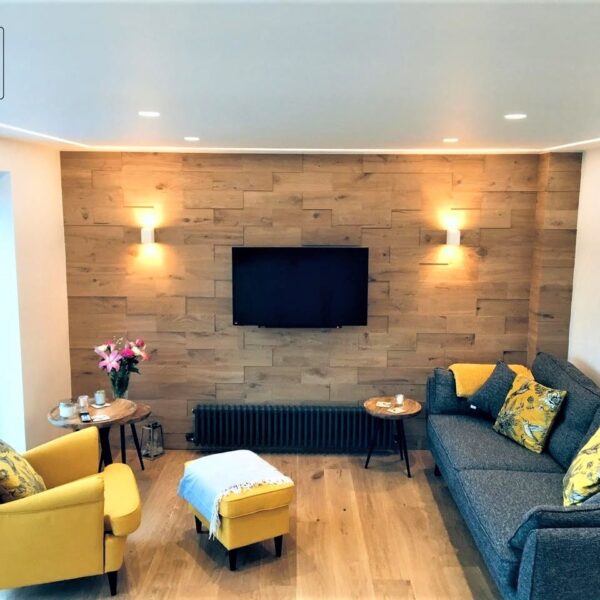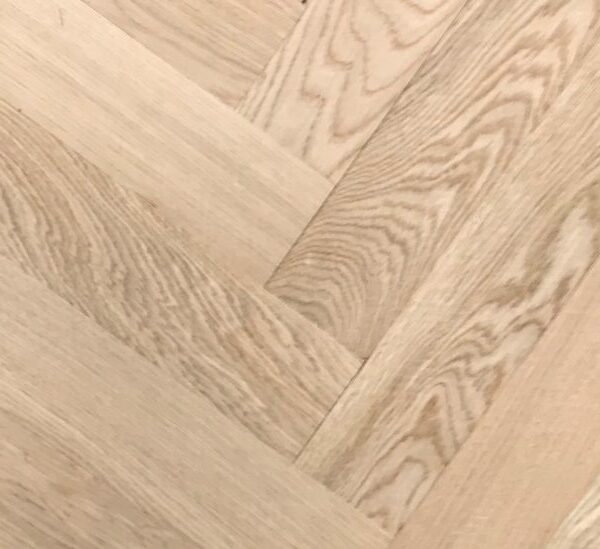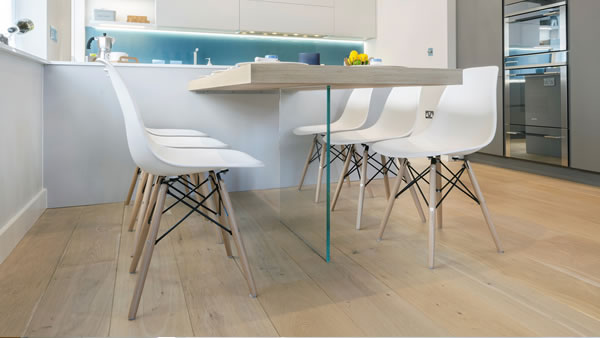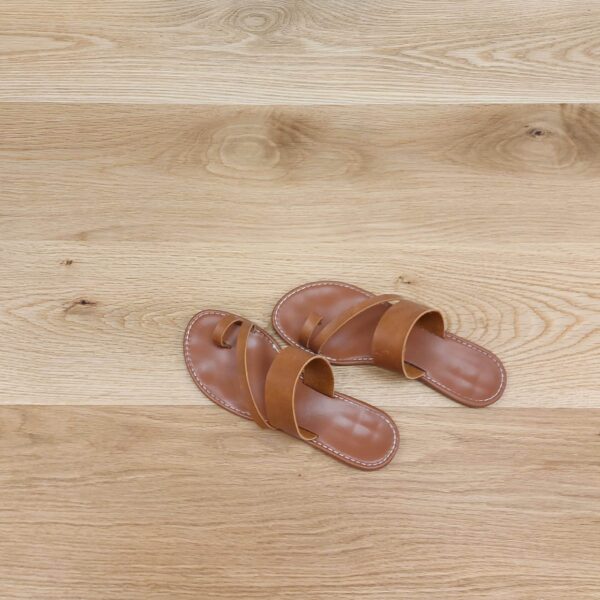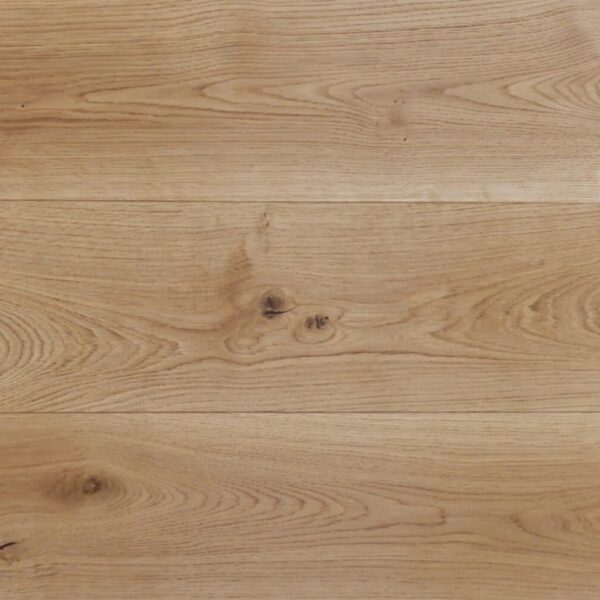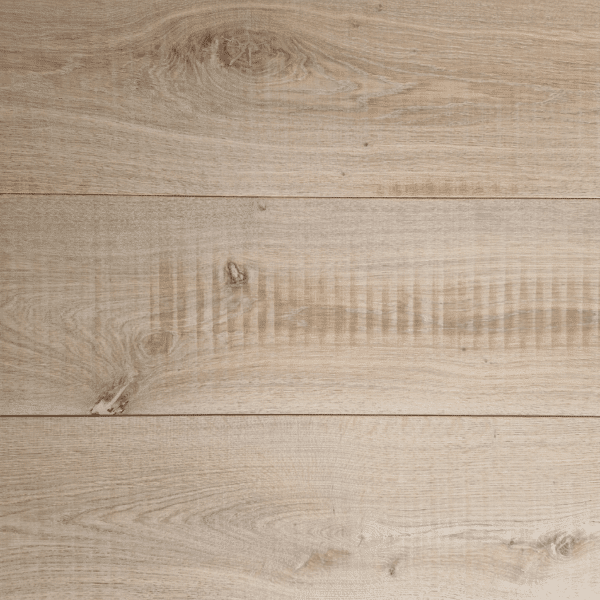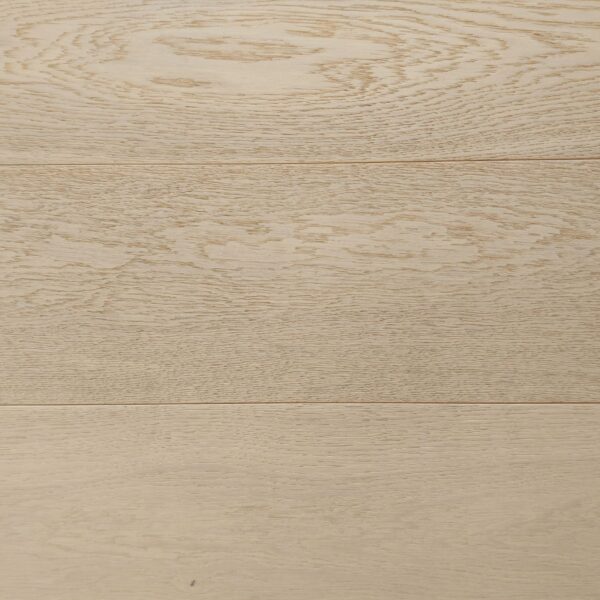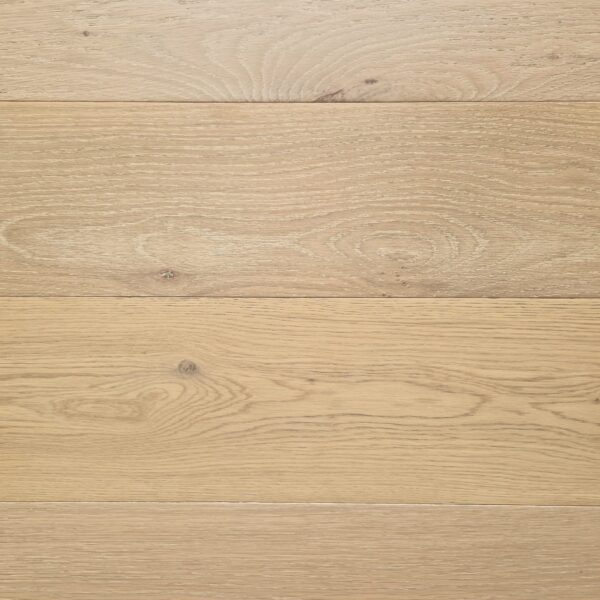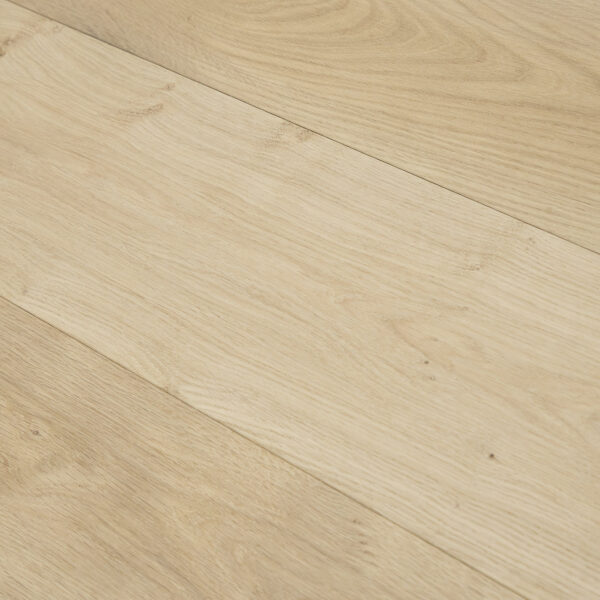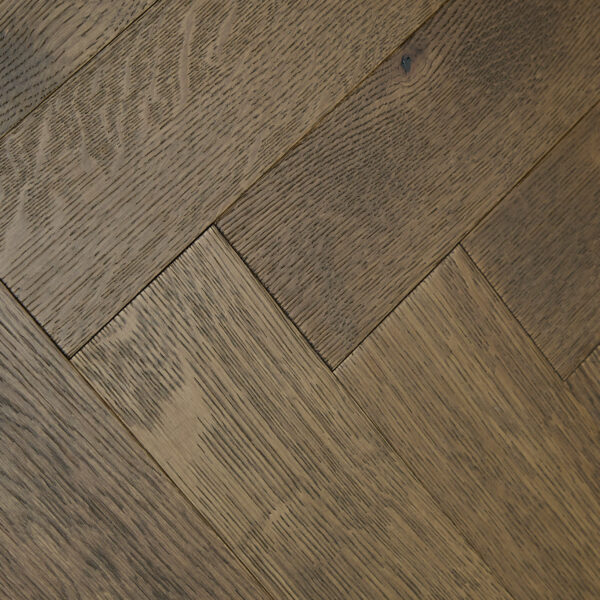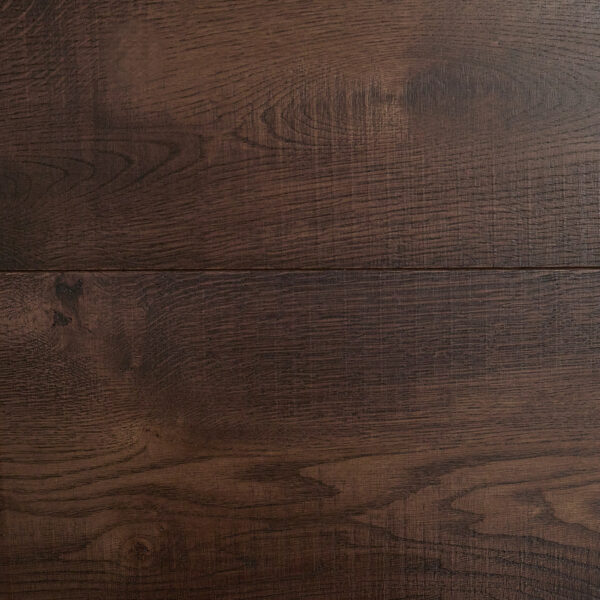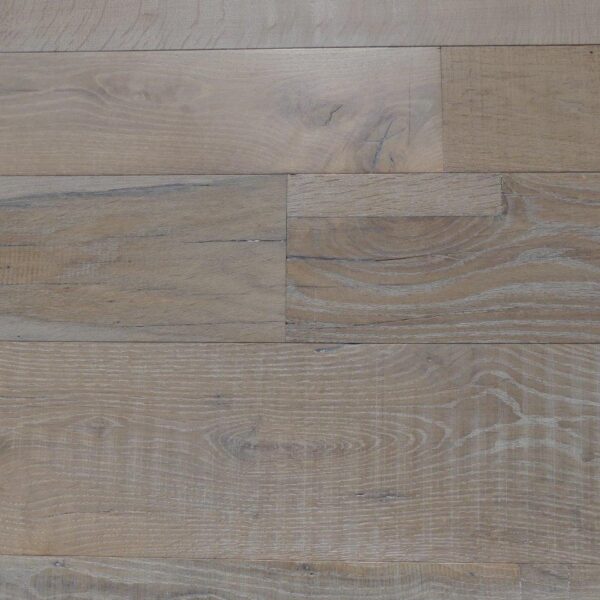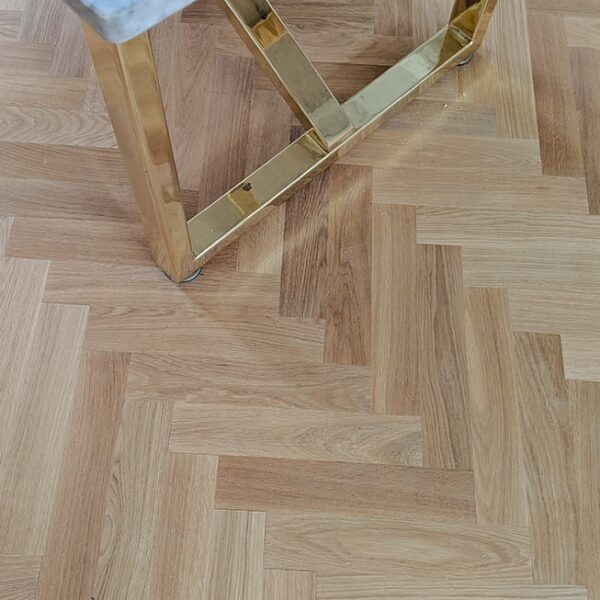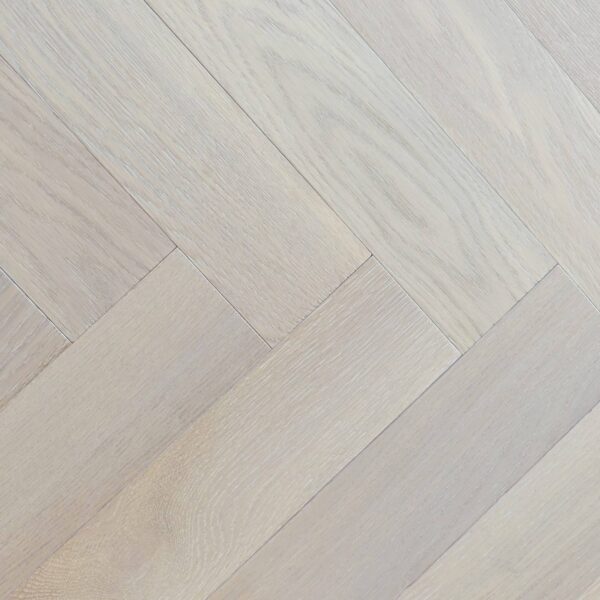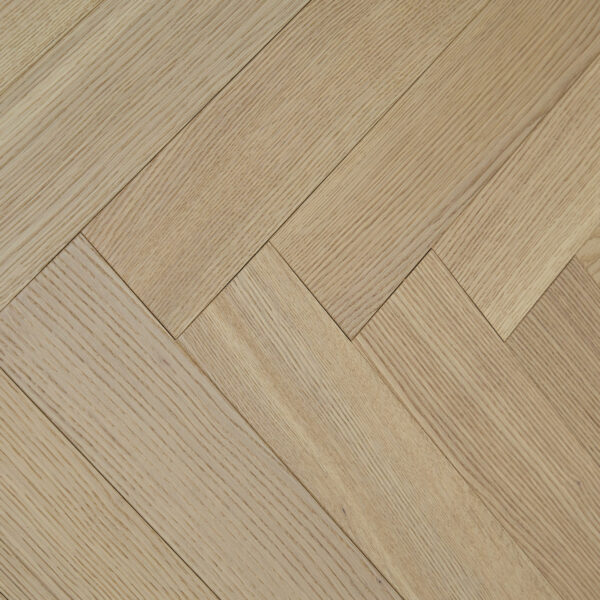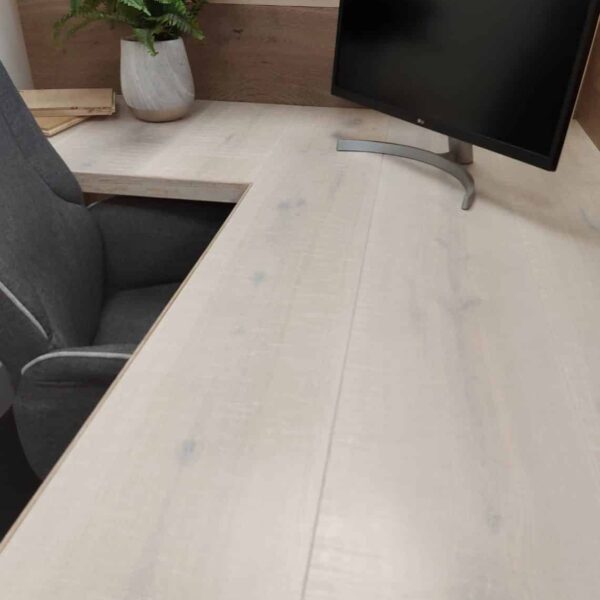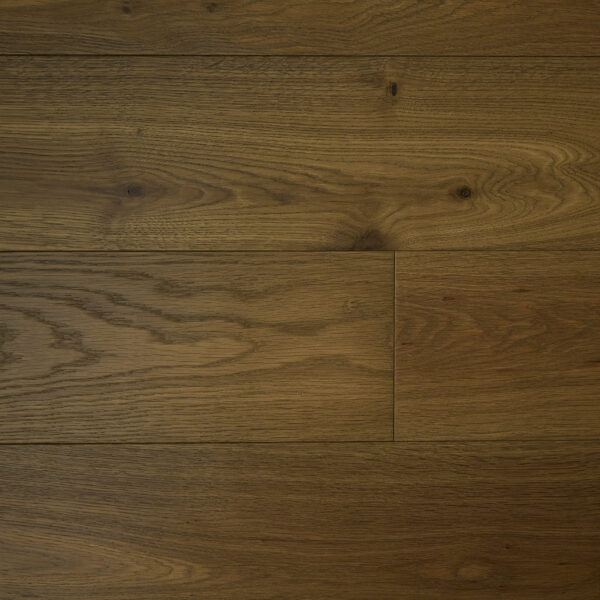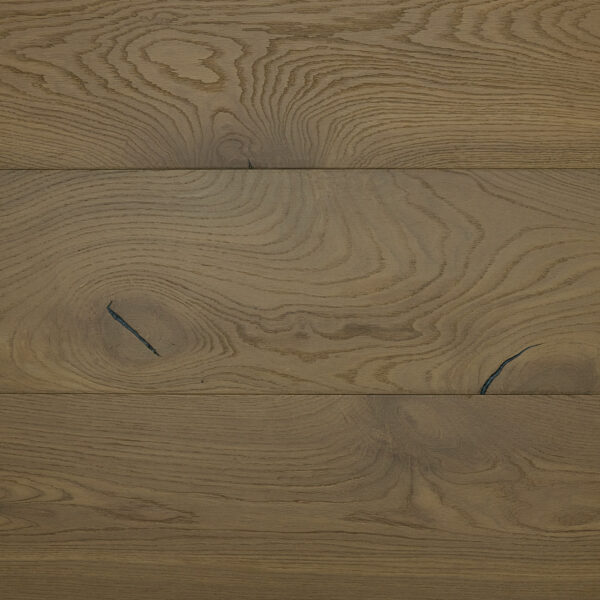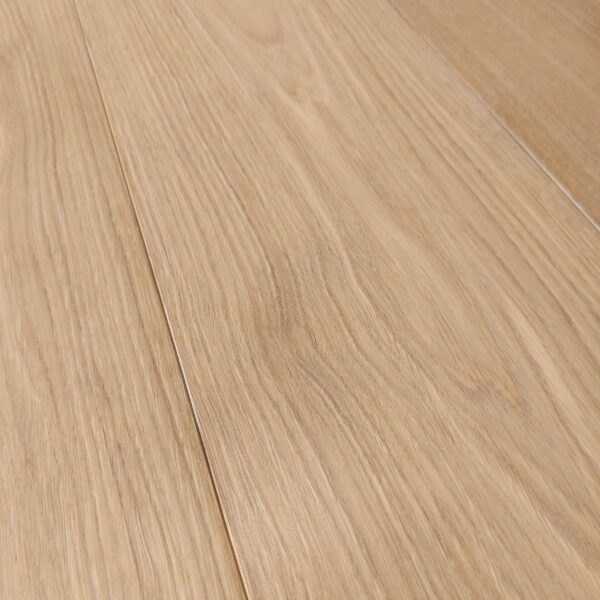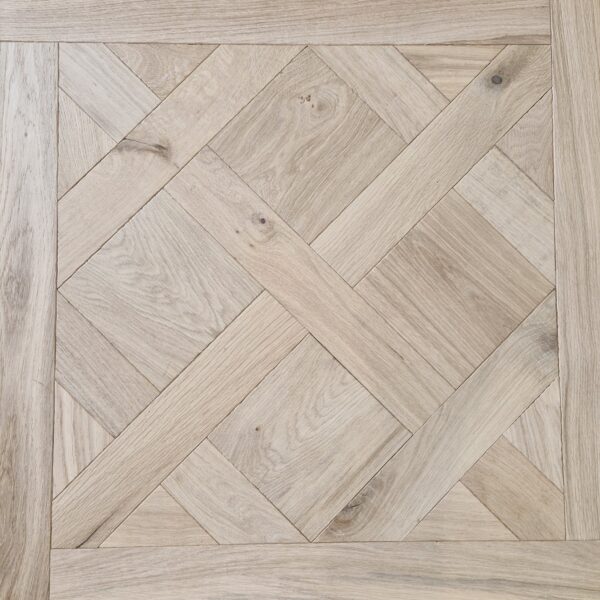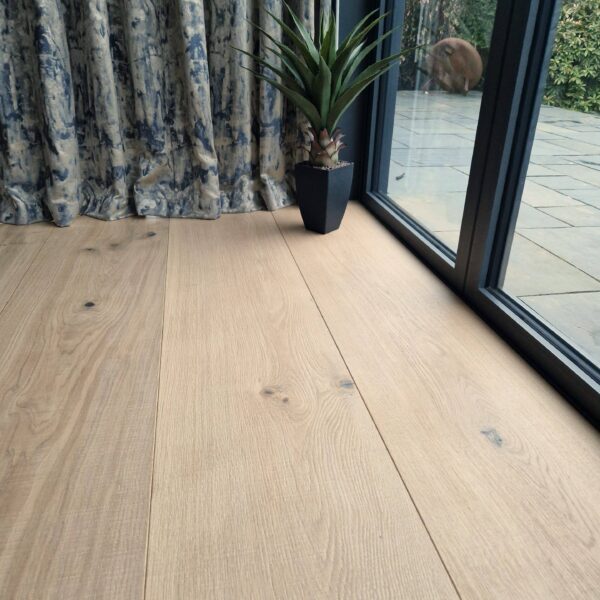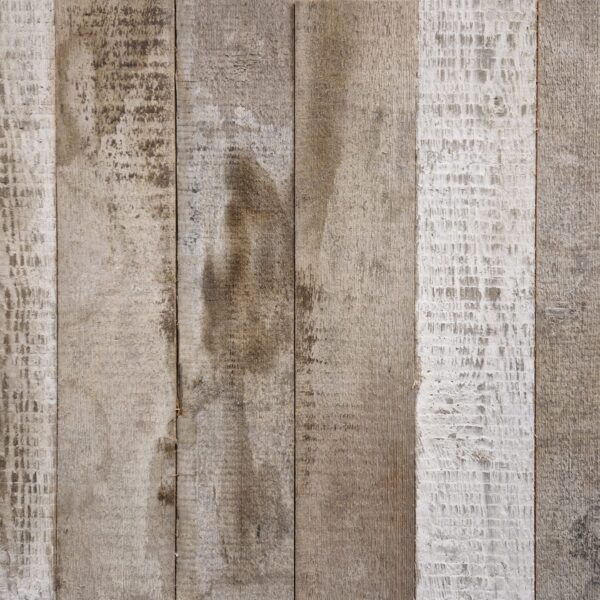Oak Flooring
About Our Oak Flooring
Oak flooring refers to flooring made from oak wood, which is a popular and widely used hardwood. Oak is known for its durability, strength, and attractive grain patterns, making it a sought-after choice for flooring in both residential and commercial settings.
There are two primary types of oak used for flooring:
Red Oak:
Red oak (Quercus rubra) is a domestic hardwood species native to North America. It features a warm reddish-brown hue with prominent grain patterns. Red oak flooring is known for its versatility and can complement a range of interior styles, from traditional to contemporary.
White Oak:
White oak (Quercus alba) is another North American hardwood species commonly used for flooring. It has a light to medium brown colour and a more subtle grain pattern compared to red oak. White oak flooring is highly durable and has a more neutral appearance, making it suitable for various design aesthetics, including modern and Scandinavian styles.
Here are some key features and benefits of oak flooring:
It’s important to note that there are different grades and cuts of oak flooring available, which can impact the appearance, quality, and price. Working with a reputable flooring supplier or professional installer can help you choose the right type of oak flooring that aligns with your preferences, budget, and design goals.
Durability: Oak flooring is renowned for its durability and ability to withstand heavy foot traffic and wear. Oak wood is known for its density and hardness, making it resistant to scratches, dents, and impacts.
Attractive appearance: Oak flooring offers a natural and timeless beauty. The prominent grain patterns, knots, and variations in colour give it a distinctive and visually appealing look. Oak can be finished in various ways, from clear sealants that highlight its natural colour to stains that can alter its appearance to match different design preferences.
Versatility: Oak flooring is versatile and can suit a wide range of interior styles. Whether you prefer a traditional, rustic, modern, or contemporary design, oak flooring can complement and enhance the overall aesthetic.
Easy Maintenance: Oak flooring is relatively easy to maintain. Regular sweeping or vacuuming, along with occasional damp mopping, is usually sufficient to keep the floor clean. Applying a protective finish can help prevent stains and prolong the lifespan of the flooring.
Longevity: When properly cared for, oak flooring can last for generations. Oak is a hardwood with inherent strength and resilience, making it a durable and long-lasting flooring option.
Increased property value: Oak flooring is often associated with quality and value. Installing oak flooring can enhance the aesthetic appeal and value of your property, attracting potential buyers or tenants who appreciate the timeless beauty and durability of oak.
Installation Steps for Oak Flooring
Installing oak flooring requires careful preparation and precise installation techniques to ensure a successful and professional-looking result. Here is a general guide on how to install oak flooring:
1. Acclimate the wood
Before installation, allow the oak flooring to acclimate to the environment where it will be installed. This typically involves leaving the wood in the room for a few days to adjust to the temperature and humidity levels.
2. Prepare the subfloor
Ensure that the subfloor is clean, dry, level, and free from any debris or protruding nails. Repair any damage or unevenness in the subfloor to create a smooth surface for the flooring.
3. Measure and plan
Measure the room to determine the amount of oak flooring needed, accounting for any wastage or trimming. Plan the layout of the flooring, considering the direction of the planks, transitions between rooms, and any specific design elements.
4. Install the vapor barrier
If necessary, install a vapor barrier or moisture barrier on the subfloor to protect the oak flooring from moisture and prevent potential issues like warping or cupping.
5. Begin installation
Start by laying the first row of oak flooring along one wall, leaving a small expansion gap between the flooring and the wall (usually around ¼ inch). Use a pneumatic flooring Nailer or pre-drill and hand-nail the boards, ensuring they are securely fastened to the subfloor. Place nails at an angle through the tongue of each board to conceal them.
6. Continue with subsequent rows
Install the subsequent rows of oak flooring, ensuring the ends are staggered to create a visually pleasing and stable pattern. Use a rubber mallet and a tapping block to fit the tongue and groove joints together tightly. Check for gaps or irregularities and make any necessary adjustments.
7. Trim and cut
When reaching the edges of the room or encountering obstacles like doorways or vents, measure and cut the oak boards accordingly to fit. Use a circular saw or a jigsaw to make precise cuts, and ensure that the edges are straight and clean.
8. Install transitions and trim
Install transition pieces, such as thresholds or baseboard mouldings, to cover the expansion gaps at doorways or along walls. Use a coping saw to cut the pieces to the desired length and angle.
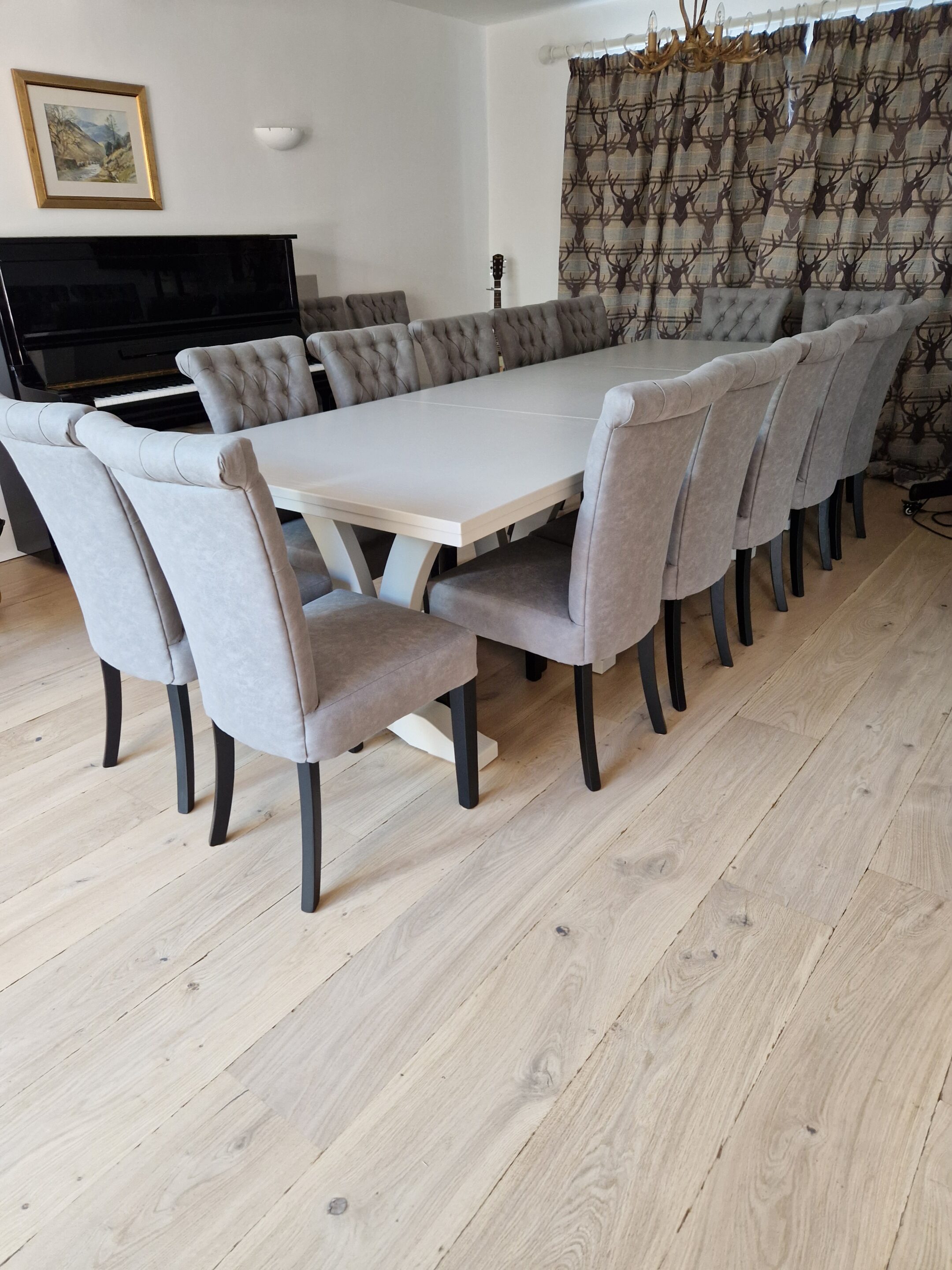
9. Finish the installation
Once all the oak flooring has been installed, fill any nail holes with wood putty that matches the colour of the wood. Sand the floor lightly to ensure a smooth surface and remove any sharp edges or imperfections.
10. Apply finish
Apply the desired finish to the oak flooring, such as stain, oil, or polyurethane, to protect and enhance its appearance. Follow the manufacturer’s instructions for application and drying times.
It is important to note that these are general guidelines, and the specific installation process may vary depending on factors such as the type of oak flooring (solid or engineered), the subfloor, and the chosen installation method (nail-down, glue-down, or floating). It is advisable to consult with a professional flooring installer or follow manufacturer recommendations for a successful oak flooring installation.
Differences between oak flooring and LVT
Comparing oak flooring to Luxury Vinyl Tile (LVT) involves considering different factors, including aesthetics, durability, maintenance, and environmental impact. Here are some reasons why oak flooring may be considered better than LVT for certain applications:
Natural beauty and authenticity: Oak flooring offers the warmth, character, and authenticity of real wood. Its natural grain patterns, knots, and variations in colour provide a unique and organic aesthetic that many people appreciate. LVT, on the other hand, is a synthetic product that replicates the look of various materials, including wood. While LVT can mimic the appearance of wood, some people prefer the authenticity and charm of real oak flooring.
Longevity and durability: Oak flooring is known for its durability and longevity. It is a solid hardwood material that can withstand heavy foot traffic and last for generations with proper care. Oak is resistant to scratches, dents, and wear, making it a suitable choice for high-traffic areas. LVT is also durable but may not be as resistant to scratches or impacts as oak flooring.
Refinishing and restoration: Oak flooring can be sanded and refinished multiple times, allowing you to restore its original beauty or change its appearance as desired. This flexibility is not typically available with LVT, as it is a synthetic product with a wear layer that cannot be sanded or refinished. With oak flooring, you have the option to refresh or change the finish if needed, extending the lifespan, and maintaining the flooring’s appeal.
Natural material and environmental considerations: Oak flooring is made from a renewable resource – trees – and is considered more environmentally friendly compared to some synthetic flooring options. Oak can be sustainably sourced from responsibly managed forests. LVT, on the other hand, is a petroleum-based product that requires energy-intensive manufacturing processes. If environmental sustainability is a priority for you, oak flooring may be a preferable choice.
Heat resistance and insulation: Oak flooring has natural thermal properties that provide insulation and can help regulate the temperature in a room. It feels warm underfoot and can contribute to energy efficiency. LVT, being a synthetic material, does not offer the same level of natural insulation and may feel cooler underfoot.
However, it’s important to note that LVT is typically more resistant to water and moisture, making it a suitable choice for areas prone to spills or high humidity.
Ultimately, the choice between oak flooring and LVT depends on personal preferences, the specific requirements of the space, and factors such as budget, durability needs, and design aesthetic. It’s recommended to evaluate your priorities and consult with flooring professionals to determine the best flooring option for your specific situation.
What interior design style does oak flooring suit?
Oak flooring is a versatile material that can suit a wide range of interior design styles due to its natural beauty and timeless appeal. Here are several interior design styles that oak flooring can complement:
Traditional
Oak flooring has long been associated with traditional interior design. Its warm tones and rich grain patterns complement classic design elements such as ornate mouldings, antique furniture, and traditional colour palettes. Oak flooring can create an elegant and inviting atmosphere in traditional spaces.
Rustic/Farmhouse
Oak flooring pairs well with rustic or farmhouse-style interiors. Its natural character, knots, and imperfections align with the rustic charm and warmth of these styles. Whether it’s wide-plank oak boards or distressed oak flooring, it can contribute to creating a cozy and welcoming atmosphere.
Transitional
Transitional design combines elements of both traditional and contemporary styles. Oak flooring can bridge this two aesthetics by adding warmth and natural beauty to a space while still allowing for clean lines and modern furnishings. It provides a versatile foundation that complements a range of transitional design elements.
Scandinavian
Oak flooring works well in Scandinavian-style interiors known for their light, minimalist, and airy aesthetic. Lighter shades of oak can enhance the bright and open feeling of Scandinavian design, providing a warm and natural element that contributes to the overall simplicity and functionality of the space.
Modern/Contemporary
Oak flooring can also be incorporated into modern or contemporary interiors. Its natural warmth and texture can balance the sleek lines and minimalism of modern design. Lighter oak tones can create a clean and contemporary look, while darker oak floors can add depth and contrast.
Coastal
Oak flooring can complement coastal-inspired interiors. Lighter shades of oak can evoke a beachy and relaxed atmosphere, resembling the natural tones of sand and driftwood. It pairs well with other coastal elements such as nautical accents, light and airy colours, and natural textures.
Eclectic
Oak flooring can be part of eclectic design, which incorporates a mix of styles, eras, and influences. The versatility and timeless appeal of oak can blend harmoniously with an eclectic mix of furnishings and decor, creating an individualised and curated space.
Ultimately, the choice of wood flooring in interior design is subjective and can depend on personal preferences, the desired atmosphere, and the overall design concept. Whether it’s a traditional, modern, rustic, or eclectic style, oak flooring can provide a beautiful and versatile foundation for a variety of interior design aesthetics.
At Oakley Products, we offer a range of wood flooring options ranging in different thicknesses (14, 15, 18, 19, 20, 21mm) and widths (110 – 390mm).
We also offer a range of high-quality laminates that are water resistant, all of which we offer samples for.
Looking For Our Pricing? Call Us Now
Fast Shipping
Fast shipping on all orders from UK
Secure Payment
We offer safe shopping guarantee
100% Satisfaction
We have 100% positive feedback from our clients
Telephone Support
We are always on hand for any questions you may have
FREE SAMPLES & TECHNICAL EXPERTISE - NEXT DAY DELIVERY - STOCK RESERVATION AVAILABLE
Inspiration
Examples of our products in live settings
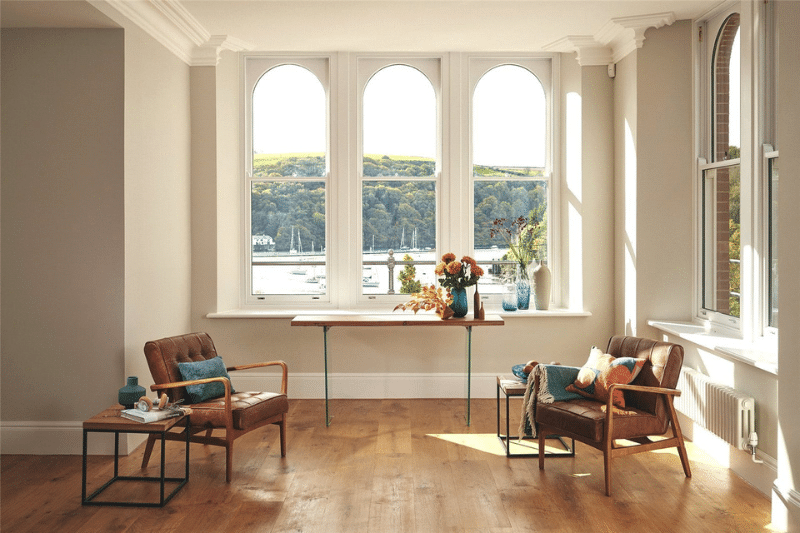
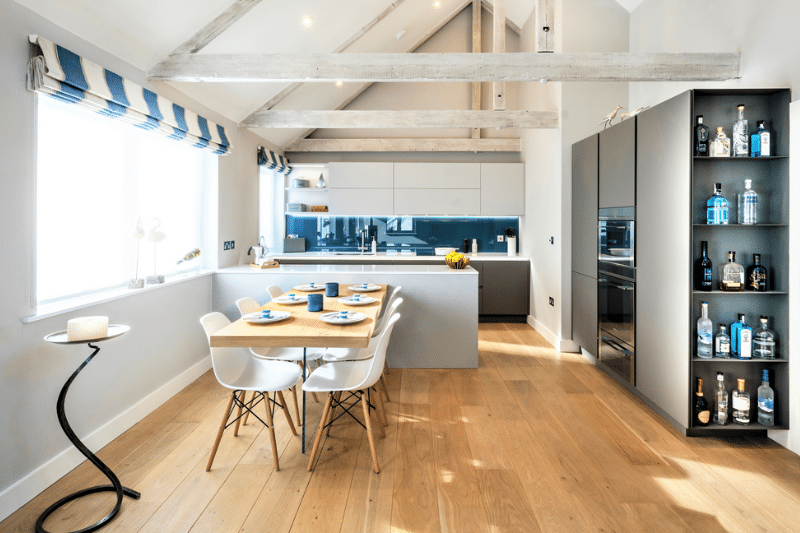
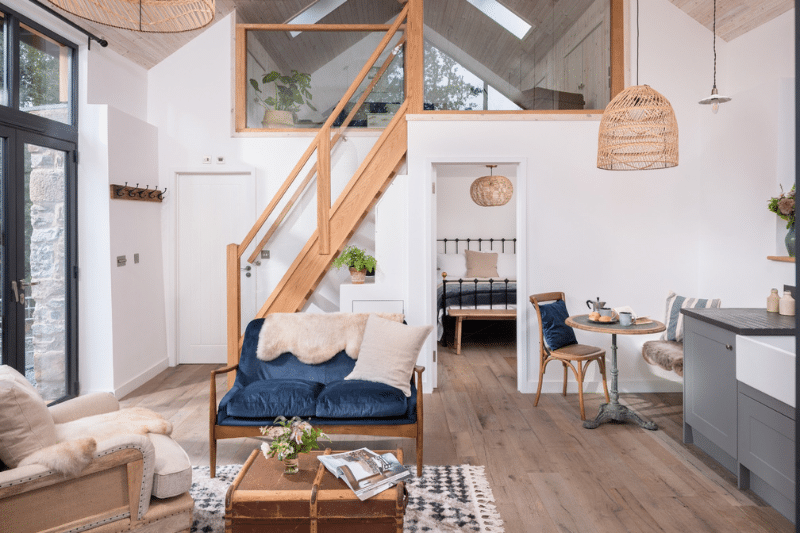
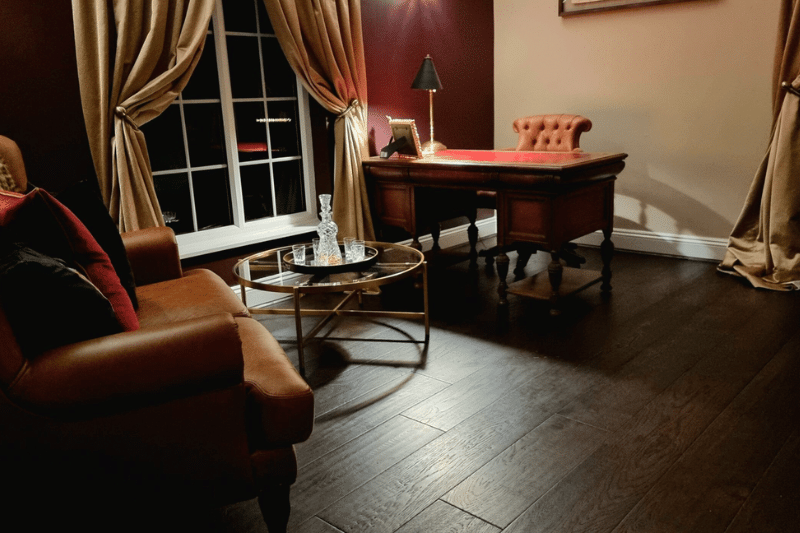
GET IN TOUCH
Have an idea or project then please get in touch...

